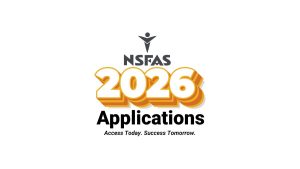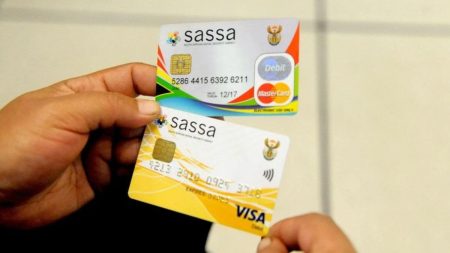With the rising cost of living and increasing financial pressures, many South Africans, including SASSA (South African Social Security Agency) grant recipients, feel forced to consider loans to make ends meet. However, while loans can sometimes be helpful in emergencies, many financial products available to vulnerable people, like SASSA recipients, can quickly turn into dangerous traps. High-interest loans, often marketed as “easy loans” or “quick cash,” can lead to long-term financial strain and debt cycles that are hard to escape.
In this article, we’ll explain the dangers of high-interest loans, how to identify loan traps, and explore safer financial alternatives to help you make sound financial decisions and avoid falling victim to predatory lending.
What Are Loan Traps?
Loan traps refer to loans that may initially seem like a solution to financial problems but eventually make the borrower’s financial situation worse. These types of loans are often characterized by:
- Extremely high-interest rates that make repayment difficult.
- Hidden fees that add to the total amount owed.
- Unreasonable repayment terms that lead to missed payments and more debt.
- Aggressive collection tactics that add stress and hardship.
Loan traps are typically found in unsecured or “instant” loans, payday loans, and other types of “quick cash” options that target people who are financially vulnerable, including SASSA recipients.
Related: A helpful Guide on Steps to Take if a Loan Shark Takes Your SASSA Card or Bank Card
The Dangers of High-Interest Loans
High-interest loans are widely accessible in South Africa and are marketed as easy solutions for anyone needing cash quickly. However, they come with significant risks:
1. Sky-High Interest Rates
Many loan sharks or even certain microlenders charge interest rates that are far above what most people can reasonably afford to repay. With interest rates sometimes reaching over 100% of the original loan amount, borrowers may find that, even after making payments for months, they have barely made a dent in their debt.
2. Hidden Fees and Penalties
Many loan providers include hidden fees or extra charges that are not fully disclosed at the time of signing. This could mean administrative fees, processing fees, and penalties for missed payments. These added charges only increase the total amount of the loan, leaving borrowers with higher repayment costs than expected.
3. Debt Cycles and Dependency
Once a borrower takes a high-interest loan, they may find it nearly impossible to repay it within the stipulated time, leading to a situation where they need to take another loan to pay off the previous one. This can create a cycle of debt that becomes difficult to escape.
4. Aggressive Collection Practices
Some lenders resort to aggressive collection tactics, which can be intimidating and distressing for borrowers. Loan sharks or unregistered lenders are particularly notorious for harassing borrowers and using underhanded tactics to collect payments.
5. Negative Impact on Credit Scores
Consistently missing payments or defaulting on a loan can damage your credit score. This can make it harder to access credit in the future, even if you’re in a better financial position.
How to Identify Loan Traps
Knowing what to look for can help you avoid falling into a loan trap. Here are some warning signs to be aware of:
- Extremely High Monthly Repayments: If a lender offers you a loan with monthly payments that seem too high to manage based on your income, it’s likely a loan trap.
- Short Repayment Terms with High Penalties: Loan traps often come with short repayment windows and harsh penalties for late payments. Read all terms carefully and ensure you can realistically meet the repayment schedule.
- Lack of Transparency: Legitimate lenders will provide you with a clear breakdown of fees, interest rates, and repayment terms. If a lender is reluctant to provide details, it could be a scam or a trap.
- Upfront Fees: Avoid lenders that charge you upfront fees. Genuine lenders add fees to your loan repayment structure, not as a requirement before disbursement.
Safer Alternatives for SASSA Recipients
If you’re in need of extra cash, there are safer, more manageable financial options available. Let’s look at some alternatives that can help you avoid loan traps:
1. SASSA Loan Facilities
SASSA itself does not offer loans, but it partners with organizations that can assist grant recipients with small loans at reasonable interest rates. Make sure to contact SASSA directly or use trusted SASSA partner institutions to avoid scams.
2. Borrowing from Family or Friends
Borrowing from family or friends can be a safer and less expensive alternative to high-interest loans. Make sure to set clear repayment terms to maintain trust and avoid misunderstandings.
3. Stokvels and Community Lending Programs
Stokvels and other community-based lending options are an excellent way to save and borrow within a trusted circle. These programs typically have lower interest rates and may be more flexible with repayment terms.
4. Financial Assistance from Local NGOs
Some non-governmental organizations (NGOs) offer financial assistance or small loans with little to no interest for people facing financial hardship. This can be a safer option than high-interest lenders.
5. Exploring Government Programs
In times of need, there are several government relief programs designed to help South Africans who are struggling financially. Programs such as the COVID-19 SRD grant or other emergency assistance funds can provide temporary financial relief without the risk of debt traps.
6. Savings Programs through Formal Banks
Even with limited income, building small savings can make a big difference. Many South African banks offer basic savings accounts with no monthly fees and low minimum balances. Building up a small emergency fund can help you avoid borrowing in times of need.
7. Consider Lay-By or Installment Plans
For purchases like appliances or other household goods, many retailers in South Africa offer lay-by or installment plans. This can be a better alternative than a high-interest loan since it allows you to make payments without incurring interest.
Tips for Financial Wellness and Debt Management
Avoiding high-interest loans is only part of financial wellness. Here are some additional tips for managing your finances as a SASSA recipient:
1. Create a Budget
Tracking your monthly income and expenses can give you a clear picture of your financial situation. A budget will help you prioritize essential expenses and identify areas where you may be overspending.
2. Save Small but Consistently
Even setting aside R10 a month can add up over time. Small savings can become an emergency fund that helps you avoid taking out loans in the future.
3. Seek Financial Advice
Many non-profit organizations and community centers offer free financial counseling. Financial advisors can help you create a debt management plan and explore ways to improve your financial situation.
4. Avoid Impulse Purchases
Stick to a shopping list and avoid unnecessary purchases. By making only essential purchases, you can stretch your monthly grant and reduce the temptation to take out loans for non-essential items.
5. Limit Borrowing to Emergencies Only
Only consider borrowing if it’s an absolute emergency, and make sure that the loan terms are fair and affordable. Avoid loans that offer “quick cash” without disclosing clear repayment terms.
What to Do if You’re Already in a Loan Trap
If you have already taken out a high-interest loan and find yourself struggling with repayments, here are some steps you can take:
- Contact a Debt Counselor: Debt counselors can negotiate with creditors on your behalf and help you create a manageable repayment plan. This could lower your monthly payments and make the debt more manageable.
- Consider Debt Consolidation: Debt consolidation allows you to combine multiple debts into one loan, ideally at a lower interest rate. This can simplify your repayment process.
- Negotiate with Your Lender: If you’re struggling to make payments, contact your lender to discuss alternative payment arrangements. Some lenders are willing to extend terms or adjust payments.
- Seek Legal Advice for Debt Relief: South African law offers some protections for people who are facing extreme debt. Consult a legal advisor to see if you qualify for assistance under the National Credit Act.
- Explore SASSA’s Social Relief Options: SASSA provides social relief options for people in dire financial situations. Contact your local SASSA office to inquire about programs that can provide short-term relief.
Key Takeaways
For SASSA recipients, the lure of quick cash loans can be strong, especially in tough times. However, taking out a high-interest loan can make your financial problems worse, often resulting in an unmanageable debt cycle. By avoiding loan traps and exploring safer alternatives, you can protect yourself and take steps toward financial wellness.
Also Read: Top 5 Side Hustle Ideas in Gauteng for 2025 to Increase Your Income










